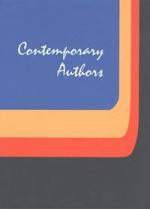|
This section contains 3,096 words (approx. 11 pages at 300 words per page) |

|
SOURCE: James, Trevor. “‘Pitched at the Farthest Edge’: Religious Presence and the Landscape in Contemporary New Zealand Poetry.” In Mapping the Sacred: Relgion, Geography, and Postcolonial Literatures, edited by Jamie S. Scott and Paul Simpson-Housley, pp. 131-152. Amsterdam and Atlanta, GA: Rodopi, 2001.
In the following excerpt, James reflects on the relationship between landscape and spirituality in Curnow's poem “Dialogue With Four Rocks.”
Introduction
‘Landscape’ is neither a secure term nor a simple concept. When one uses the word, it is easy to forget that it is a technical term originating in the graphic arts and, as one would expect, has the idea of representation embedded in it. Such representation was, of course, a consistent feature of the British colonial adventure in the work of the artists who accompanied vessels and expeditions, whether scientific, military or civilian, and provided the public “at home” with images of the unknown. Ironically...
|
This section contains 3,096 words (approx. 11 pages at 300 words per page) |

|


